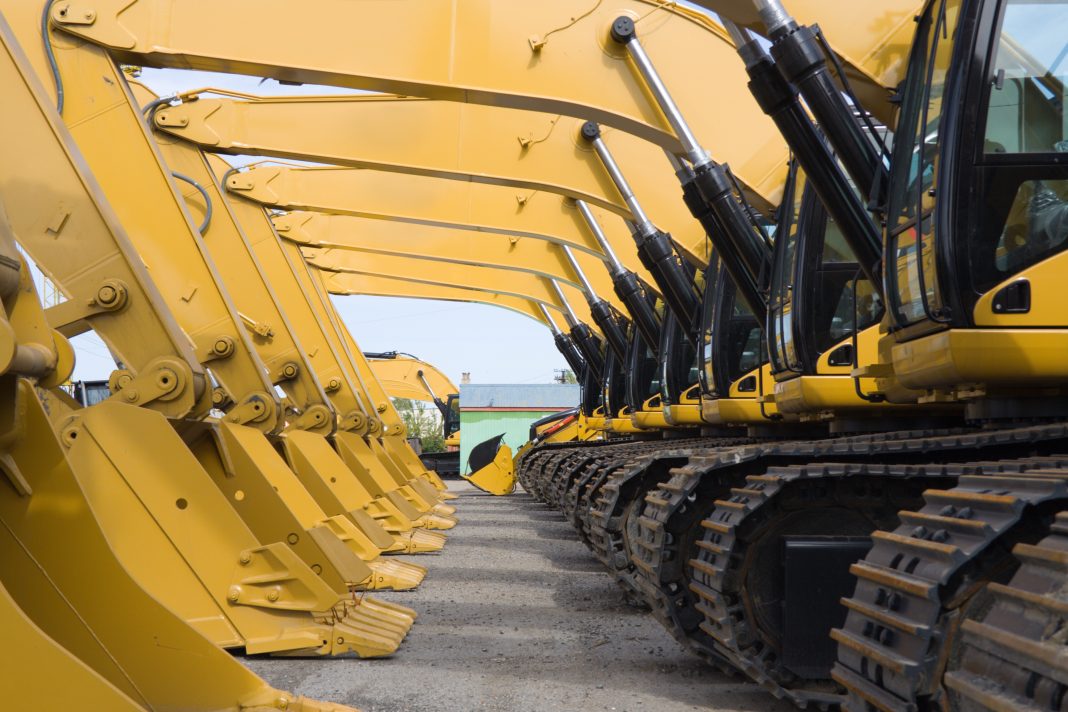As inflation shows little sign of abating to lower levels, Neeral Shah, CEO at Yardlink, outlines methods of futureproofing construction equipment rental for contractors
Futureproofing contruction equipment rentals is a growing concern among construction contractors as the economic climate shows few signs of stabilising.
According to the latest issue of Glenigan’s Construction Index, the value of work started between January and March this year was 35% lower than that of the preceding three months. And that figure rises to 46% compared to the same three months last year.
Similarly, the cost of constructing projects has risen dramatically because of high energy prices and a persistent high level of inflation. Needless to say, it’s never been more important to cut unnecessary spending.
Necessity is the mother of innovation
The good news is these external factors are forcing the industry to really think tactically about how to thrive in this environment. And there’s a few areas within construction that have waited to embrace greater efficiency.
Operational costs should be a focus. Equipment hire, combined with the benefits of advanced technology, presents a really promising opportunity for big savings – both in terms of time and money. These reductions have actually been possible for a long time. But, with the industry being typically attached to traditional systems, it has taken longer to realise them.
Industry operators should see the current economic pressure as an opportunity to innovate now. Streamlining inefficient supply chains will help to increase narrow profit margins.
Complex projects will need more clear oversight
Construction is a complex industry. It involves a lot of moving parts – both on the ground and in the office – across often very large, dispersed projects. ‘Disorganised’ may be too strong a description in some cases, but in many, it’s the reality that the industry accepts as standard. Recent McKinsey research discovered that almost every construction mega project overruns its budget by over 30%. And poor organisation is one of the biggest contributors to that.
To improve this situation, project management needs to adopt processes that organise this complexity, enabling more efficient management. Anyone working in the industry has countless stories about overlapping duplicate orders and misplaced equipment. The technology to overcome this problem exists. Yet, many don’t realise it, and hold on to methods of operating that could be more efficient.
One of the biggest benefits of advanced technology in construction project management is the oversight it can provide to managers. Digital logs can keep track of all equipment on site at specific times. These logs can also keep track of incoming deliveries and upcoming returns. For project managers working on large projects, this oversight can revolutionise the way they operate. It helps them to spot and reduce surplus equipment, and ultimately reduces costs for management companies, contractors, and investors.
Keeping track of equipment returns is a particularly important benefit of this technology. Late collection payments are prolific, and these contribute to overrun budgets. It’s an unnecessary cost that should be eliminated. And getting equipment back to leasing companies on time could really help to realise more profit for the industry, especially in the current economic climate.
Nurturing local procurement is another way of futureproofing cosntruction equipment rental
When we consider the actual equipment itself, there are a whole range of opportunities to reduce costs. Contractors tend to hire equipment based on historic relationships. But doing so often means that equipment travels long distances to reach destination projects.
Fuel costs of transporting that equipment are just one piece of the puzzle. In a world where companies need to scrutinise their ecological impact, carbon emissions, and operational costs, it no longer makes sense to do things this way. After all, it increases the logistical complexity involved in running projects, which, across multiple sites, can present serious operational challenges. This complexity creates operational complexity, which leads to unexpected (yet regular) issues that push costs higher and higher.
Sourcing equipment from local suppliers makes a lot more sense. This wasn’t always possible before, because contractors might lack the local knowledge to find the right suppliers. But developing those regional networks will now be crucial in reducing operational costs. It’s a daunting task, but with the right partner it can provide greater ease to the burden of inefficient procurement processes. It’s a time investment well worth making.
Reduce onsite idling with offsite opportunities
Once the equipment arrives on site, there’s yet another opportunity to reduce project costs. Coming from far away locations, contractors keep it on site for periods much longer than it’s actually in use. Instead, it stands there, idle, and often running up a hefty bill. This presents another unnecessary inefficiency, and the McKinsey report highlights it as another contributing factor for overrun budgets.
Contractors and project managers should aim to reduce equipment idling time to win some of this budget back. Equipment should be hired when and where it’s needed – a practice made a lot easier, and simpler, when it comes from local sources. The kind of digital technology that provides better oversight of construction sites will also help to make this possible by reducing the chance of ‘panic orders’.
It’s impossible to say what the next year will hold for the construction industry. But one thing is for certain, whichever way we look at it: companies need to reduce wasted time, equipment, and money. Futureproofing construction equipment rental could be a hugely significant solution to doing so.

















